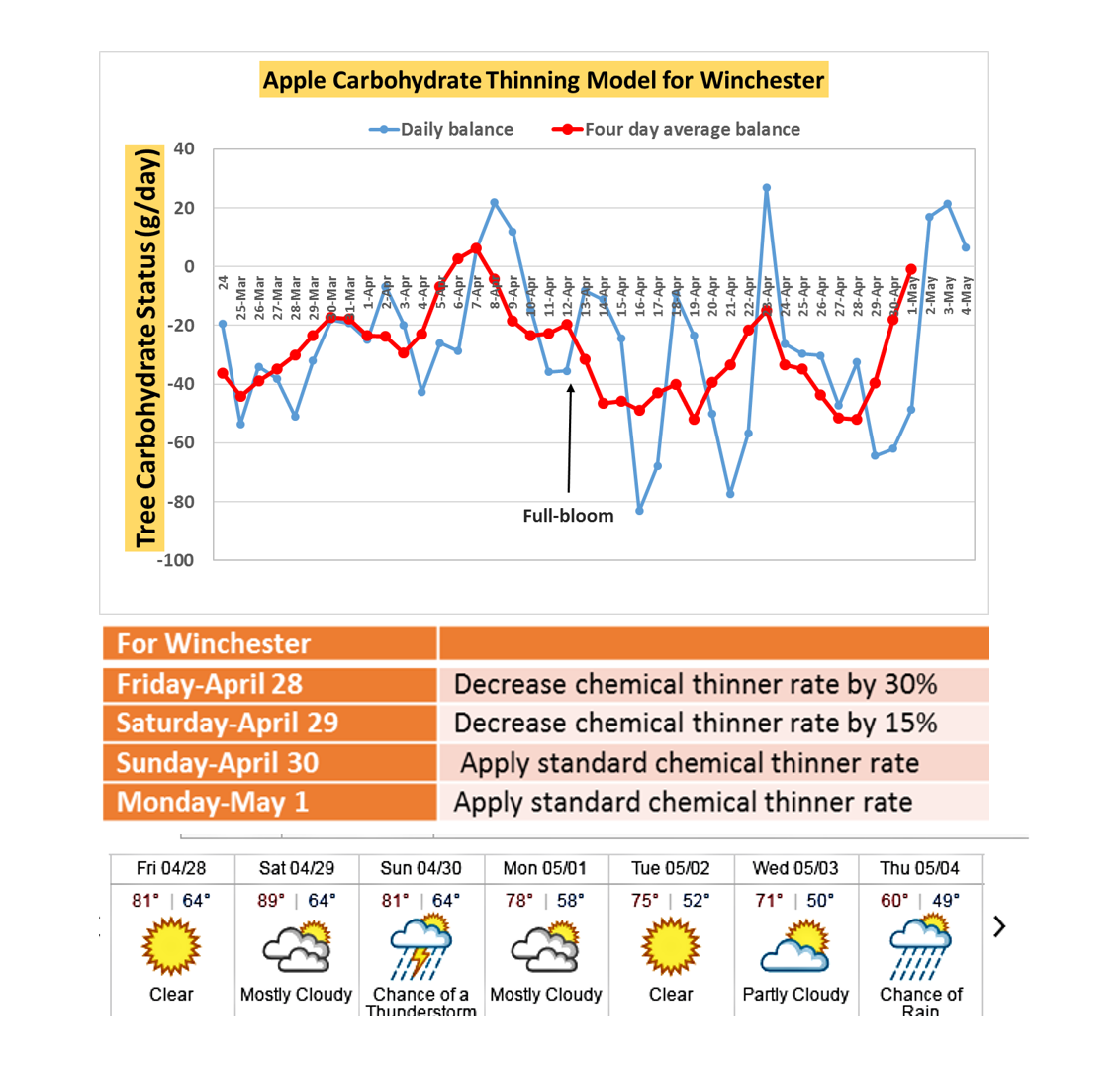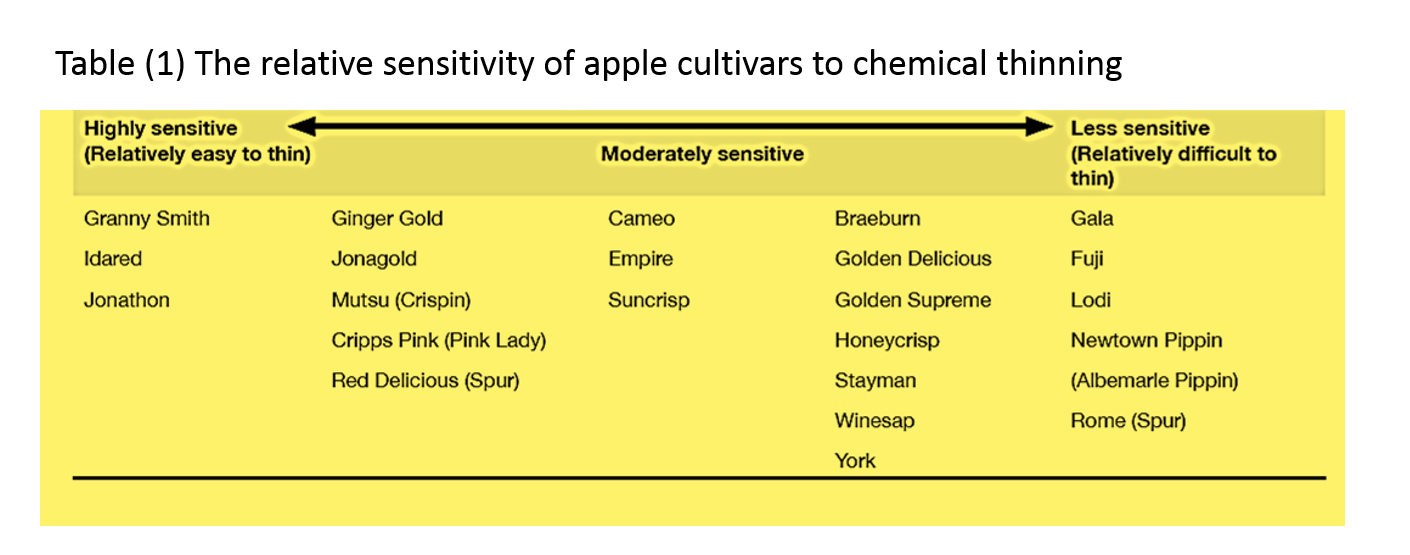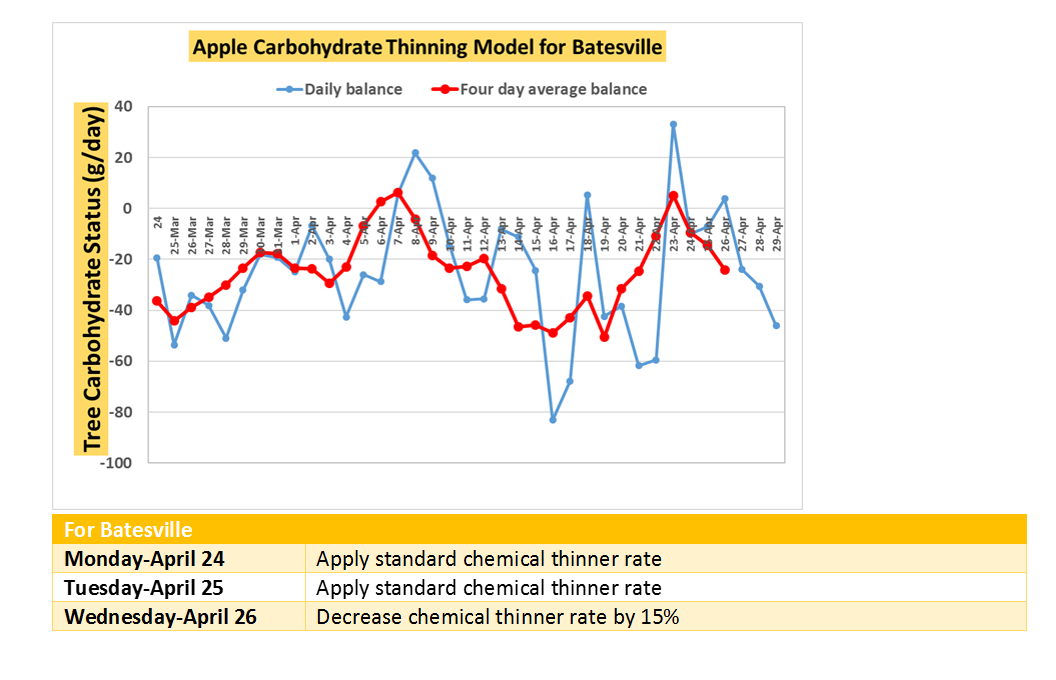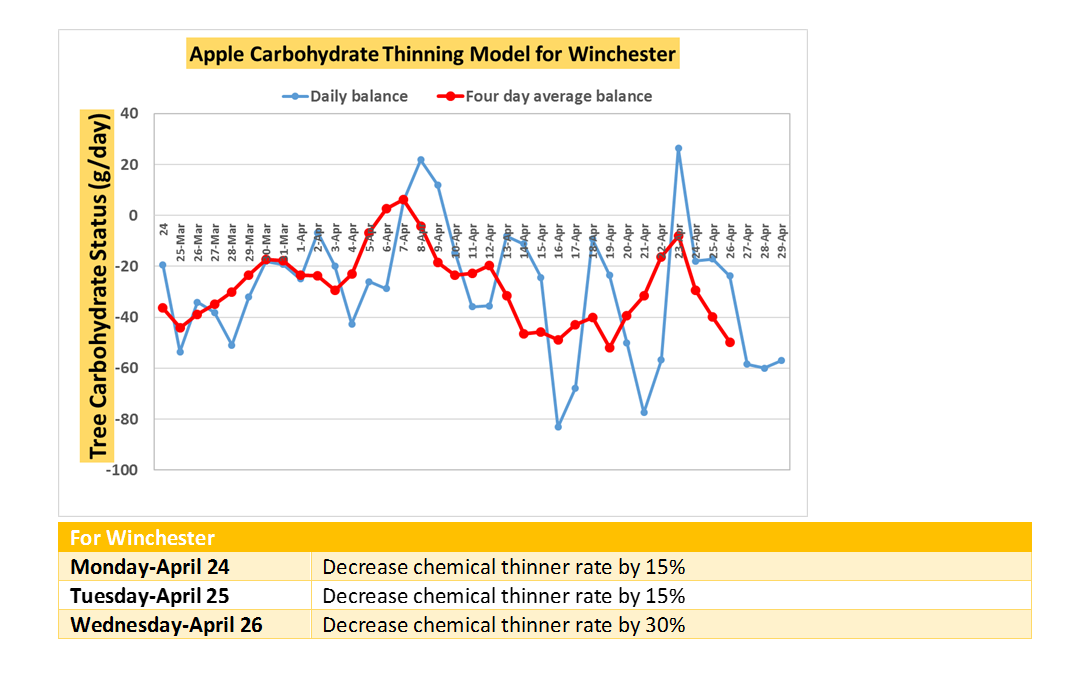-
The following is a note of caution from Alan Lakso, the developer of the apple carbohydrate-thinning model (May 11, 2017):
“• The apple carbohydrate model assumes that the trees are healthy, normal vigor, have no significant stress (frost, drought, nutrient) and no significant carry-over effects from previous years that might change the tree response to the weather. With the severe drought in 2016, there may be orchards that will have a weakened state coming into 2017 which would likely make the tree abnormally sensitive to thinners. So in those cases the model may suggest a stronger thinner concentration than is appropriate. Conversely, if irrigated last year, with the warm season and lots of sun, those trees may be in better than normal condition and harder to thin.
• With the current cold period, flowering, pollination, initial set and early fruit growth may not be very well modeled as we did not have much data under these very cold (or also excessively hot) conditions when the model was developed.
For all these reasons, you should have less confidence in the model this year. Use your experience with your unique situation.”
-
Here is my take on this:
– I have not observed any unusual or extreme conditions in Virginia in the last few weeks that would seriously affect the accuracy of the model in predicting the timing and rate of chemical thinners.
– We have applied chemical thinners (e.g. 6-BA, NAA) to our Fuji and Gala trees in Winchester lab based on the model recommendations and we got fruit thinning enough to call it good.
– The fruit size in Winchester and Central Virginia is above 20 mm and rescue thinning using ethephon would be the only chemical thinning option at this time. For ethephon, the variety sensitivity and temperatures are more important factors to consider than the carbohydrate level.
-
Therefore, I would recommend the following for this week’s thinning treatments:
– The weather forecast predicts temperatures close to 90 oF this week, which will increase the responsiveness to ethephon applications and might lead to over-thinning if the proper rates are not used.
– The carbohydrate model for Winchester and Central Virginia predicts carbohydrate deficit for the following six days (until May 22), which should also increase the responsiveness to ethephon. The model has already stopped providing any recommendations for the rates. However, if you will apply ethephon this week, I would recommend decreasing the rate by 30% at least and not to add oil or a surfactant to the ethephon-carbaryl mix.
– Rome Beauty and Golden Delicious are highly sensitive to ethephon and under the above-mentioned conditions; it might be risky to use ethephon with these varieties.
The following is the carbohydrate model for Winchester and Central Virginia.



















